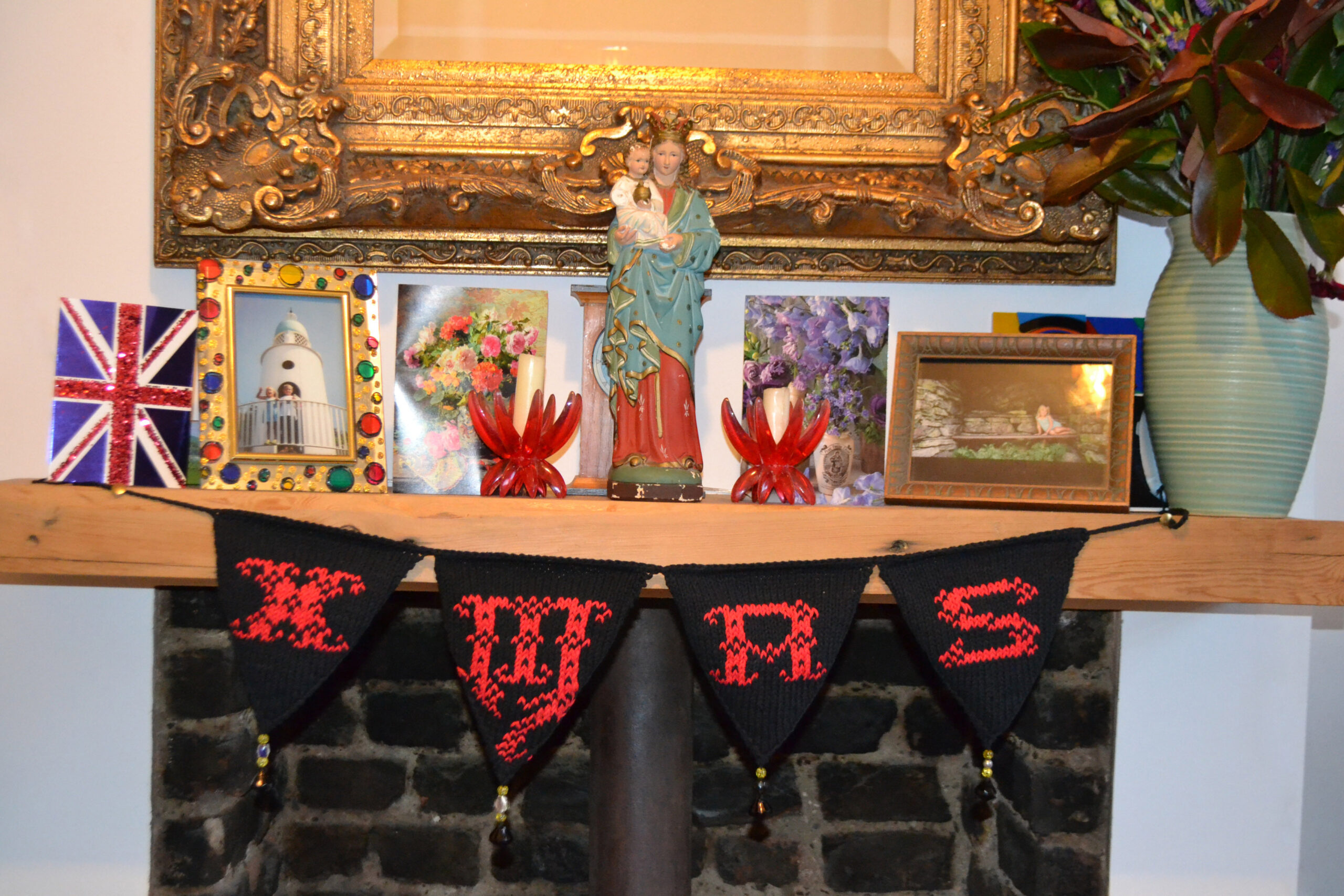Streatham WI
About twelve months ago I received an email enquiry from the Secretary of the Streatham WI in South London, who was compiling a list of speakers for the 2014 meetings. I accepted the invitation to speak at a meeting, mainly because the members had voted for a talk on Crochet, which is one of my design specialisms and a subject that I’m passionate about, but also because I was intrigued to find out more about this long-established women’s movement post “Calendar Girls”.
Crochet has been much maligned over recent decades, mainly down to its association with badly made Granny Squares worked in bright, synthetic yarns and joined to make misshapen tops and blankets. I was pleased therefore to be offered the opportunity to assure the WI that there’s so much more to this wonderful craft than the aforementioned Granny Square motif.
Crochet is a very versatile textile form and it’s currently seeing a renaissance with young British designers like Sibling producing quirky, stunning designs, which fill top fashion pages and the catwalk alike. Recently, designer Henry Holland paid homage to the humble Granny Square motif by digitally printing it onto fine jersey fabric to produce a collection of fun bodycon dresses and leggings. Although purists might bulk at the idea of Crochet as a printed pattern repeat, this collection also helped to revive the interest in the craft.
Digital printing aside, it’s also fun to make your own Crochet pieces and it’s relatively easy to learn ….. in a small group. My meeting with the WI was confirmed and the group requested a talk followed by a workshop, where they wanted to have a go at learning some stitches. The realisation soon set in of what I’d let myself in for – not only was Crochet going through a renaissance, but so was the WI movement. I was informed that there are regularly 60 attendees at the Streatham meetings ….. and they all wanted to “have a go” at Crochet!
The warm welcome that I received from the Streatham WI was amazing. The age range immediately struck me; from late teens to late 80s; some were mums and daughters with grandchildren in arms. It took me back to my childhood, when as a 9 year old I would sit at the back of the WI meetings attended by my mum and I’d busy myself with Crochet and Hand Knitting. Many decades on, now I was offered a seat at the front of the proceedings and a glass of wine – although tempting, I declined the latter as there was still a matter of tutoring 60 women in the art of Crochet!
My talk on Irish Crochet was well received and the fine Crochet lace samples I passed around were much admired. There was a lot of interest in my work in progress, which demonstrated how Irish Crochet motifs are made as separate items, then pinned to a backing sheet before being joined using a simple Crochet netting stitch (see photo) This technique, which was devised to replicate fine Venetian lace, was introduced to villagers by Irish nuns in 1845 as a cottage industry to provide a source of income during the potato blight. It’s popularity as a highly sought after lace product peaked in the 1880’s with much of the work being exported to the USA, where San Francisco became a major distribution centre until the 1906 earthquake.
Once I’d seduced everyone with what can be achieved with Crochet, then came the micro-teach! Looking around the group, fortunately and unexpectedly I spotted some familiar faces – fortuitously there were three members that happened to be former students of mine (it’s a small world!), along with some others that looked like they knew what they were doing, so the workshop was looking to be a lot less daunting. It was great fun – with an experienced Crocheter on each table armed with instructions to make a simple Irish Crochet leaf, my role became that of a “speed dater” – flitting from table to table answering questions and conducting small group demos (glass of wine in hand!)
In 90 minutes I’m pleased to say that many learned the necessary stitches to complete a leaf and overall there was a real sense of achievement.
It was an evening to remember, Streatham WI.
Happy Hooking x
